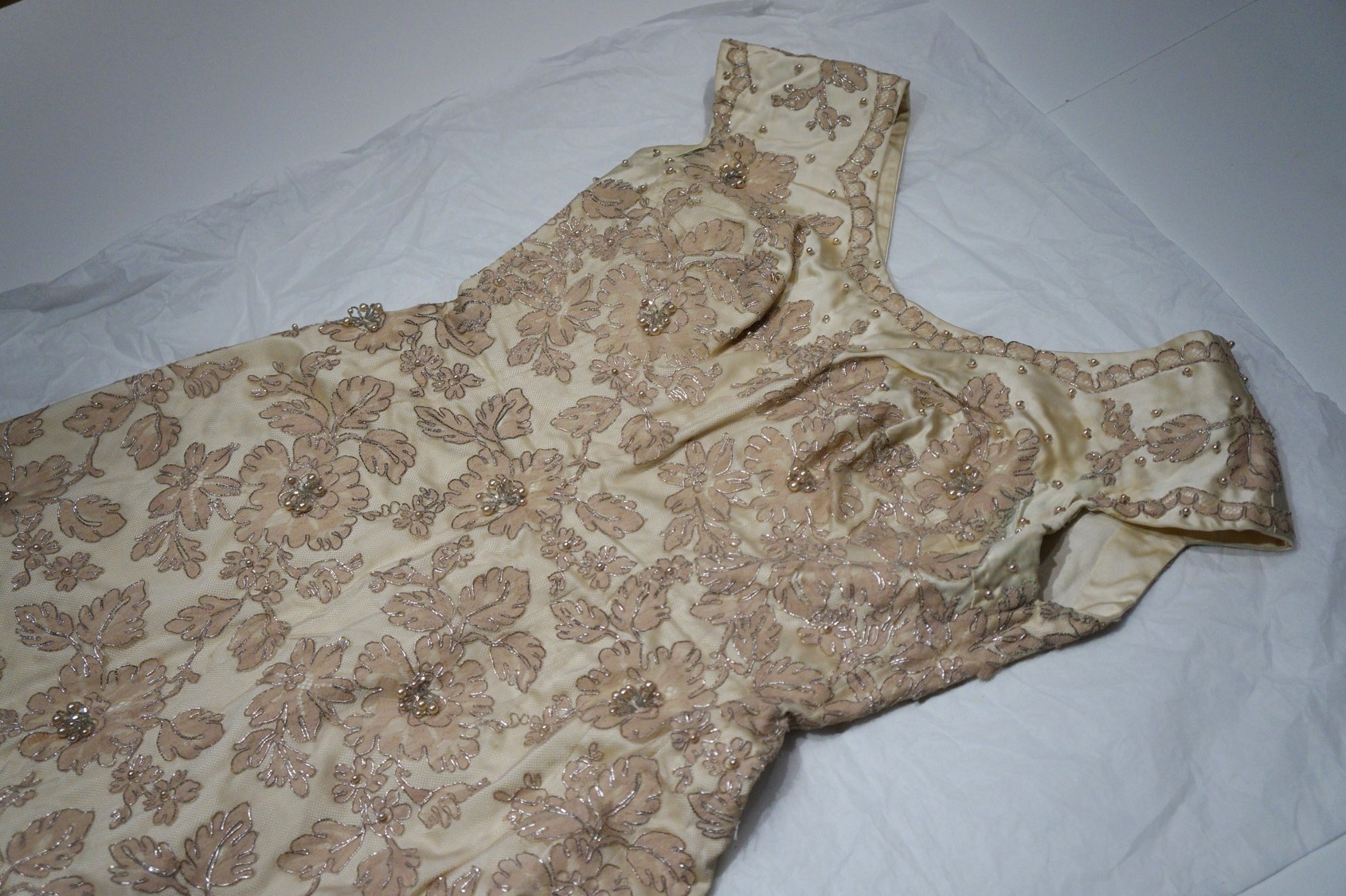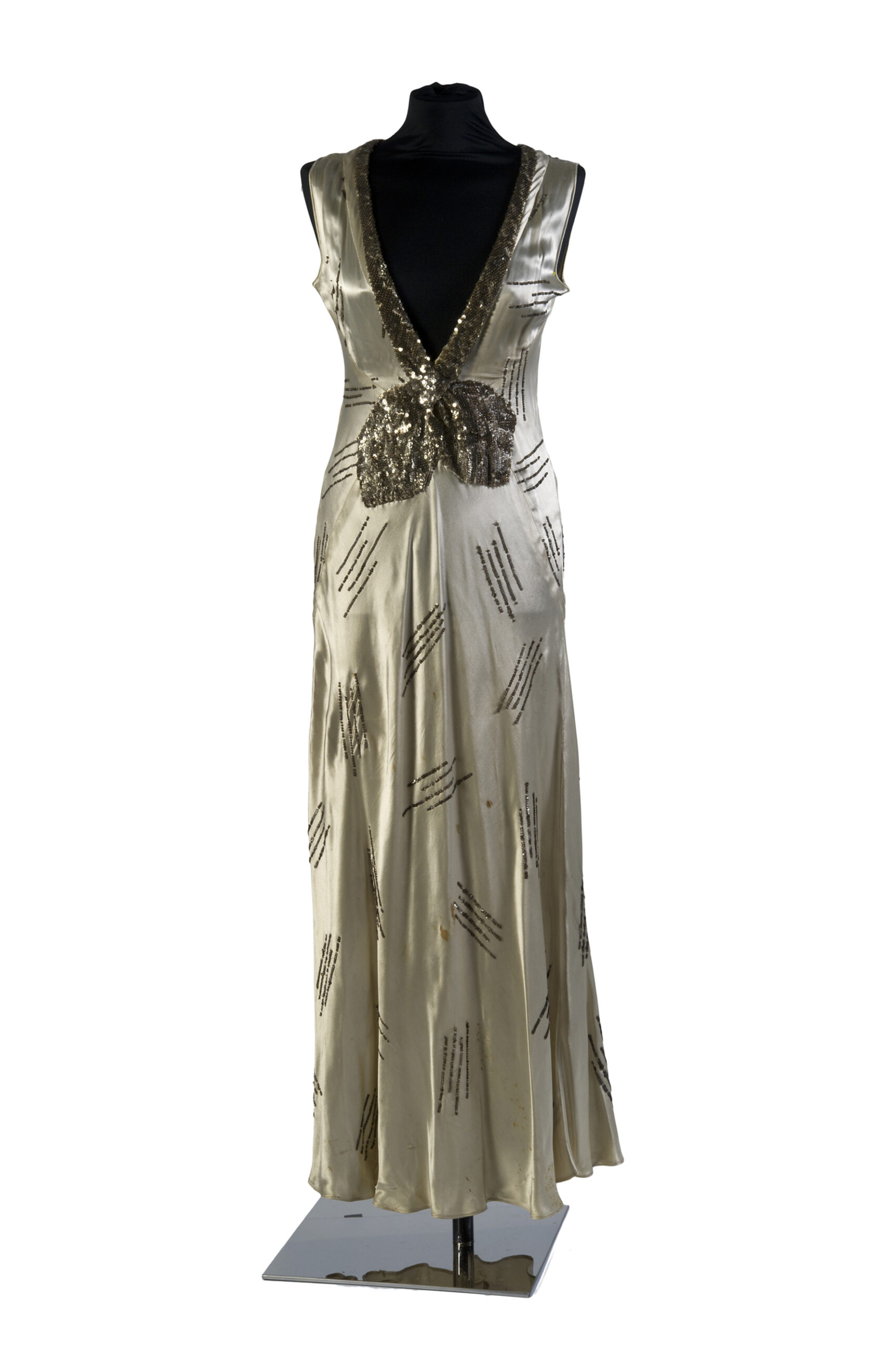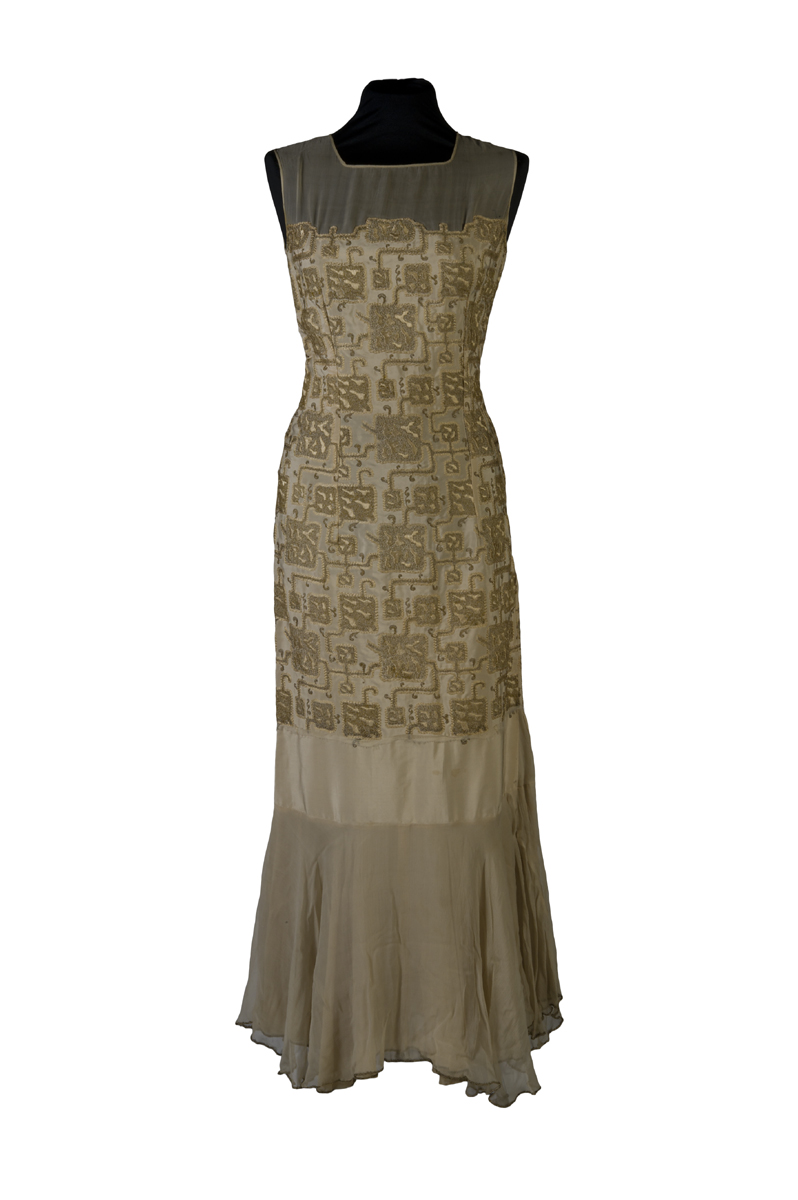Wedding Dresses in the JML’s Collection
 1497.9 - Photograph of Anne Hauser & Claude Diamond
1497.9 - Photograph of Anne Hauser & Claude DiamondDuring my Collections Placement at the Jewish Museum London, I have been assisting in the audit of the museum’s collection of clothing and textiles, as part of the wider audit project which involves looking at all 40,000 objects within the collection. The clothing in the museum’s collection is incredibly eclectic, with garments originating from all around the world and ranging from the early 19th century to the present day. Within this extensive collection is a vast array of wedding dresses, the majority of which date from the late 1800s to the 1960s.
The wedding dresses are amongst the museum’s most delicate, elaborate and intricately detailed garments and are often in remarkably good condition, as these types of dresses were only intended to be worn once or subsequently worn for very special occasions. Visible wear and tear of some of the wedding dresses is of no less importance in comparison to those in pristine condition. Rather, signs of the garment being worn provides a sense of the owners’ personal connection to the garments; each stain, tear or frayed edge is a sign of the owner’s love and enjoyment of wearing the garment on their wedding day and beyond.
I have chosen three wedding dresses from the collection to focus on in this post, in order to convey a sense of the Museum’s fantastic array of such garments and how they relate to, and inform, the wider collection at the museum.

2021.37.1 – Gold Neymar wedding dress.
Neymar Wedding Dress
This gold Neymar wedding dress belonged to Lily Estreich, and was worn upon her marriage to Israel Estreich in 1957. This dress, along with a purple occasion dress by Neymar, is a more recent addition to the museum’s collection, having been acquired in 2021. Neymar was a couture fashion house started by Nettie Spiegel, based at 19 Berkeley Street, London. The fashion house was an incredibly important and popular designer amongst the Jewish community in London in the mid 20th century, as well as being popular with celebrities and for use as costumes for theatre productions. Nettie Spiegel, who came to the UK from Berlin on the Kindertrasport, became a designer following working in a fashion house on Great Portland Street, London, from the age of 16.

1988.535 – Cream satin wedding dress worn by Sarah Rose.
1930’s Wedding Dress
This wedding dress was worn by Sarah Rose for her marriage to Mark Rose in 1935 and the dress was donated to the museum by Mark Rose in 1988. Wedding dresses of the 1920s and 30s tended to adopt popular styles of evening dress, enabling them to be worn for special occasions. This wedding dress encapsulates various aspects of popular fashions at the time, from its use of satin, cut on the bias for a more elegant shape and the use of sequins for embellishment and decoration. Metallic materials and colours were very popular in evening wear due to their extensive use in film costumes, as they could stand out even when depicted in black and white films and photographs.
The sequined pattern, consisting of 4 lines of sequins placed in a variety of angles throughout the dress, is reminiscent of the distinctive geometric patterns of Art Deco designs which complements the simple, elegant shape of the garment. However, the use of the bow, present at the base of the plunging V-neck at the back of the dress, seems to reference more traditional embellishments typically used in wedding dresses. Bows were often used to adorn wedding dresses in the late 19th and early 20th centuries, often being referred to as a “true love knot”.

1998.101.1 – Handmade wedding dress, created by Anne Hauser.
Handmade Wedding Dress
Wedding dresses were not always commissioned or bought from fashion houses. This example from the museum’s collection was handmade by its wearer Anne Hauser, for her marriage to Claude Diamond at Bayswater Synagogue in August 1930. The dress is made of silk with a vast amount of heavy embroidery in cream and gold coloured threads. Many industries across the globe were affected by the Wall Street Crash in 1929 and the financial crisis that followed, including the fashion and textiles industry in Britain. Styles of wedding garments at the beginning of the 1930s therefore became less elaborate than the previous decade, with fashion publications emphasising the importance of adaptability for these garments. For example, expanses of fabric used for trains or a large skirt could be used to make additional, smaller garments once the dress had been worn.
This may have been the case for Hauser and her dress, as there is a section of exposed silk in between the embroidered panel and skirt, where an extended skirt was once attached. The featured photograph at the top of this post shows Hauser wearing the dress on her wedding day, and this, now exposed, section is covered with a larger silk skirt. This dress is of a similar style to one belonging to Hauser’s sister in law, now in the V&A museum, designed by Aida Woolf in 1923, which also has an extended train from the drop waist of the dress, similar in placement to where Hauser’s dress appears to be missing an element. This suggests that the piece now missing from the dress was possibly adapted into another garment at a later stage.
These three examples of wedding dresses only hint at the wider collection of fashion and textiles at the Jewish Museum, however illustrate the importance of clothing within the collection. Although wedding dresses were possibly only worn once, through looking at makers, owners, materials, techniques and even absent parts of the garments, one can interpret its meaning and significance for its owner. This also creates an understanding of the wider societal and historical context in which it was created and worn.
Bibliography and further reading
Ehrman. E, ‘The Wedding Dress: 300 Years of Bridal Fashions’, V&A Publishing (2011)
‘For Richer For Poorer: Weddings Unveiled’, Jewish Museum London, (2015), https://jewishmuseum.org.uk/2015/02/13/for-richer-for-poorer-weddings-unveiled/
Bide, Bethan (Dr.), ‘The Height of Fashion’, J. Life Magazine (2023), https://jlifemagazine.co.uk/interviews-leeds/the-height-of-fashion-2